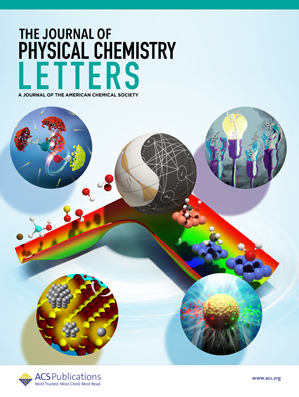In Situ Spectroscopies Unraveling the Molecular Mechanisms of H+ and Cl– on Pyridine Inhibition of Low-Carbon Steel Corrosion
IF 4.8
2区 化学
Q2 CHEMISTRY, PHYSICAL
引用次数: 0
Abstract
This study utilized a variety of in situ spectroscopic techniques to investigate the corrosion inhibition mechanism of three pyridine-based inhibitors on carbon steel in HCl and NaCl solutions. The results demonstrated that the adsorption and orientation of the inhibitor molecules play key roles in the corrosion inhibition mechanism studied using second harmonic generation (SHG). The number density of molecules adsorbed on the substrate is a crucial factor affecting the inhibition efficiency. A two-step physical model elucidates the SHG signal time evolution, revealing initial rapid inhibitor adsorption and subsequent slow dynamic adsorption optimization. Our research indicated that, in HCl solution, H+ protonates the pyridine inhibitors, and the protonated species adsorb onto the positively charged substrate bridging, forming a compact chemisorbed layer that effectively blocks corrosive ion access. In contrast, in NaCl solution, Cl– promotes the formation of a porous corrosion product film, which synergizes with adsorbed inhibitors to mitigate metal degradation. This finding offers insights into molecular-level interfacial inhibition mechanisms in environments with H+ and/or Cl– ions.

本研究利用多种原位光谱技术研究了三种基于吡啶的抑制剂在盐酸和氯化钠溶液中对碳钢的缓蚀机理。结果表明,抑制剂分子的吸附和取向在利用二次谐波发生(SHG)研究的缓蚀机理中起着关键作用。吸附在基底上的分子数量密度是影响抑制效率的关键因素。一个两步物理模型阐明了 SHG 信号的时间演变,揭示了最初的快速抑制剂吸附和随后的缓慢动态吸附优化。我们的研究表明,在盐酸溶液中,H+ 会使吡啶抑制剂质子化,质子化的物质吸附在带正电荷的基底桥接上,形成一个紧密的化学吸附层,有效阻止腐蚀离子的进入。与此相反,在 NaCl 溶液中,Cl- 会促进多孔腐蚀产物膜的形成,与吸附的抑制剂协同作用,缓解金属降解。这一发现有助于深入了解在含有 H+ 和/或 Cl- 离子的环境中分子层面的界面抑制机制。
本文章由计算机程序翻译,如有差异,请以英文原文为准。
求助全文
约1分钟内获得全文
求助全文
来源期刊

The Journal of Physical Chemistry Letters
CHEMISTRY, PHYSICAL-NANOSCIENCE & NANOTECHNOLOGY
CiteScore
9.60
自引率
7.00%
发文量
1519
审稿时长
1.6 months
期刊介绍:
The Journal of Physical Chemistry (JPC) Letters is devoted to reporting new and original experimental and theoretical basic research of interest to physical chemists, biophysical chemists, chemical physicists, physicists, material scientists, and engineers. An important criterion for acceptance is that the paper reports a significant scientific advance and/or physical insight such that rapid publication is essential. Two issues of JPC Letters are published each month.
 求助内容:
求助内容: 应助结果提醒方式:
应助结果提醒方式:


